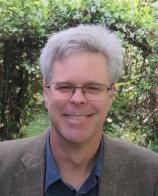The Most Dangerous Man in America: Timothy Leary, Richard Nixon and the Hunt for the Fugitive King of LSD
Review
The Most Dangerous Man in America: Timothy Leary, Richard Nixon and the Hunt for the Fugitive King of LSD
When President Richard Nixon resolved to wage war against drugs and drug users, he set his sights on the most notorious figure on the scene, though arguably the least harmful: Professor Timothy Leary, who had proved his bona fides as a criminal in 1970 by getting busted for two marijuana joints and breaking out of a minimum security prison.
Leary was a spokesman for LSD and any other drug that had even remotely the same effects, but not personally a spokesman for the violence that was erupting in the name of such substances. However, once he was on the run, with Nixon in hot pursuit, he gladly accepted help from such revolutionary firebrands as Black Panther leader-in-exile Eldridge Cleaver and extremist “Weatherman” Bill Ayers in order to remain outside the US and escape prosecution for as long as possible.
"Award-winning writers Bill Minutaglio and Steven L. Davis (DALLAS 1963) have teamed up once more to compose this gripping account of a drug guru on the lam with a world leader on his trail."
Award-winning writers Bill Minutaglio and Steven L. Davis (DALLAS 1963) have teamed up once more to compose this gripping account of a drug guru on the lam with a world leader on his trail. In an almost day-by-day chronicle, we see Leary, the idol of the psychedelic hippie movement who had once campaigned for the governorship of California, practicing yoga by standing on his head in a California prison yard. He was getting physically fit for the flight from incarceration engineered by his wife Rosemary, hotshot lawyer Michael Kennedy, and the Brotherhood of Eternal Love, a loose-knit group of drug dealers originally inspired by Leary’s mantra: Turn on, tune in, drop out. He and Rosemary wound up in Algiers and were given immunity there, assisted by Cleaver and supported by name or by cash donations from such notables as John Lennon, Ken Kesey, Allen Ginsburg and Norman Mailer.
As described by Minutaglio and Davis, freedom was rarely fun for the aging ex-Harvard professor and his ex-model wife. Though the blessings of drugs, sex, and rock and roll were still intermittently available, it would seem that the bulk of Leary’s time abroad was spent trying to figure out who to pay and where to find money to pay them to stay abroad. His struggle finally ended in 1973 when he was brought back to the US from Kabul along with a new girlfriend. His prison cell was next to that of Charles Manson, allowing the two to exchange their different views of the cultures of LSD and mind control. Given the chance at release, Leary willingly squealed on former colleagues.
Without moralizing, Minutaglio and Davis highlight those parlous years by drawing lines between the skewed philosophy that got Leary in and out of trouble and the skewed ethics of his nemesis Nixon’s Watergate debacle and downfall. The authors punctuate nearly every chapter with the latest news of bombings, killings and riots promulgated by activists who seemed bent on proving, in the words of Leary’s friend and Weather Underground leader Bernadette Dohrn, that America’s youth were “making love, smoking dope and loading guns.”
Reviewed by Barbara Bamberger Scott on January 12, 2018
The Most Dangerous Man in America: Timothy Leary, Richard Nixon and the Hunt for the Fugitive King of LSD
- Publication Date: January 9, 2018
- Genres: History, Nonfiction
- Hardcover: 400 pages
- Publisher: Twelve
- ISBN-10: 1455563587
- ISBN-13: 9781455563586





